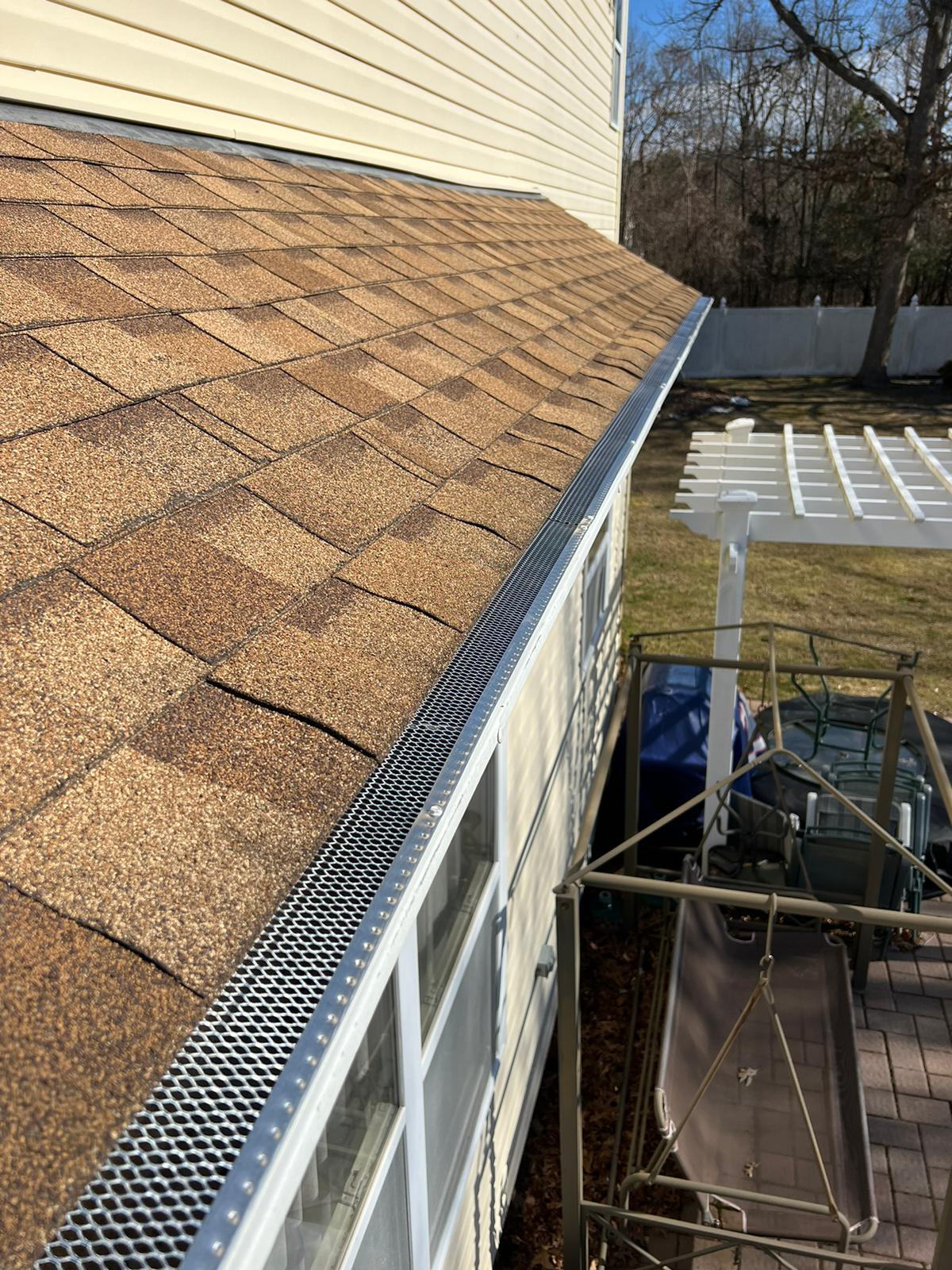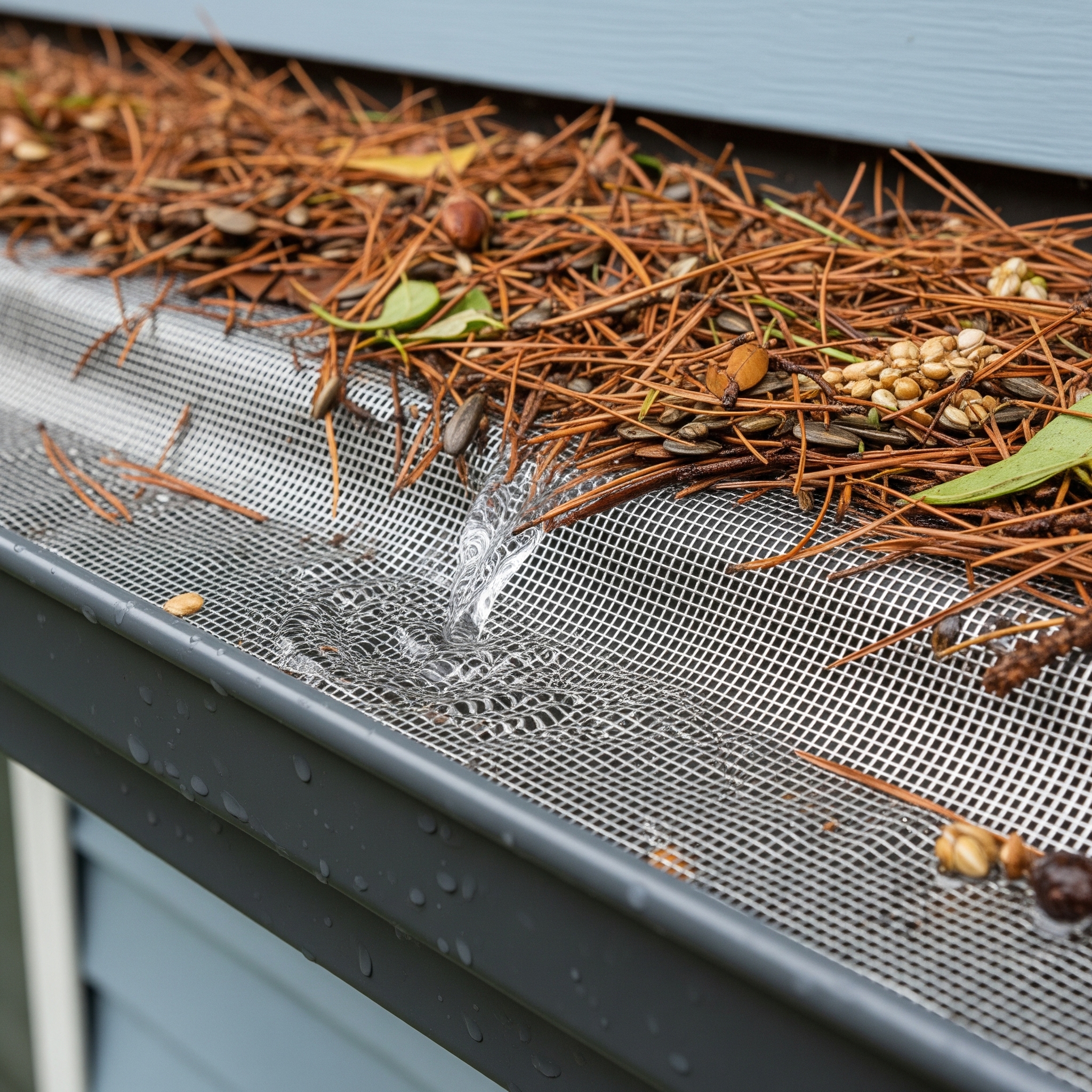Gutter guards are essential components of a well-maintained home, providing protection against clogged gutters and potential water damage. In this comprehensive guide, we’ll explore the importance of gutter guards, the different types available, installation methods, maintenance tips, and more.
Why Gutter Guards?
Importance of Gutters
Gutters play a crucial role in directing rainwater away from your home’s foundation, preventing potential water damage, erosion, and basement flooding. They are an integral part of the overall drainage system.
Issues with Clogged Gutters
Over time, gutters can become clogged with leaves, twigs, dirt, and other debris. This can lead to a range of problems, including water overflow, mold growth, damage to the roof, and even compromised structural integrity.
Benefits of Gutter Guards
Gutter guards act as a barrier, preventing debris from entering the gutters while allowing water to flow freely. The benefits include reduced maintenance efforts, extended gutter lifespan, and protection against water-related issues.
Types of Gutter Guards
Mesh Gutter Guards
Mesh guards consist of a fine metal or plastic screen that allows water to pass through while blocking debris. They are versatile and suitable for various climates.
Reverse Curve Gutter Guards
These guards use the principle of water adhesion to direct water into the gutter while deflecting debris. They are effective against leaves and larger debris.
Bottle Brush Gutter Guards
Bottle brush guards feature a cylindrical brush design that sits inside the gutter, preventing debris from settling. They are effective in preventing clogs caused by leaves and pine needles.
Foam Gutter Guards
Foam guards are made from porous materials that allow water to pass through while blocking debris. They are easy to install and work well in moderate debris conditions.
Nylon Gutter Guards
Nylon guards are durable and resistant to rust and corrosion. They feature a fine mesh that effectively prevents small debris from entering the gutter.
Surface Tension Gutter Guards
Surface tension guards use the physics of water flow to guide rainwater into the gutter while preventing debris from entering. They work well in heavy rain conditions.
Choosing the Right Gutter Guard
Considerations
When choosing a gutter guard, consider factors such as the local climate, the amount of debris in the area, and the type of roof on your home.

Climate and Weather Conditions
Certain gutter guards may be more effective in specific climates. For example, mesh guards are suitable for areas with a moderate amount of debris, while surface tension guards excel in heavy rainfall.
Roof Type
Different roof types may require different gutter guards. Consider the pitch and material of your roof when selecting the appropriate gutter guard.
Budget
Gutter guards come in a range of prices. Consider your budget and weigh it against the long-term benefits of investing in high-quality guards.
Installation Process
DIY vs. Professional Installation
Gutter guard installation can be a DIY project for those with basic handyman skills. However, for complex roof structures or larger homes, professional installation is recommended.
Tools and Materials Needed
Gutter guards typically come with installation instructions. Gather the necessary tools, such as a ladder, drill, and screws, before starting the installation process.
Step-by-Step Installation Guide
- Clean Gutters: Remove any existing debris from the gutters.
- Install End Caps: Secure end caps to prevent debris from entering through the sides.
- Attach Gutter Guards: Follow the manufacturer’s instructions for securing the gutter guards to the gutter system.
- Overlap Seams: If using multiple sections of guards, ensure proper overlap to prevent gaps.
- Secure and Test: Secure the guards in place with screws and conduct a water test to ensure proper flow.
Safety Precautions
Safety is paramount during installation. Use a stable ladder, wear appropriate safety gear, and consider having a spotter when working at heights.
Maintenance and Cleaning
Regular Inspection
Periodically inspect your gutter guards for signs of damage or debris buildup. Catching issues early can prevent more significant problems down the line.
Cleaning Tips
While gutter guards reduce the frequency of cleanings, they still require occasional maintenance. Use a hose or leaf blower to remove any accumulated debris on the surface.
Repairing Damaged Gutter Guards
Address any damage promptly to maintain the effectiveness of the gutter guards. Repair small tears or gaps using patch kits or replacement sections.
Professional Maintenance Services
Consider hiring professionals for thorough inspections and cleanings, especially if you have a complex roof structure or are unable to perform maintenance safely.
Common Issues and Solutions
Ice Dams
Install heated gutter guards or use ice melt products to prevent the formation of ice dams in colder climates.
Debris Accumulation
Regularly inspect and clean your gutter guards to prevent debris buildup. Trim overhanging branches that may contribute to the accumulation.
Rust and Corrosion
Choose rust-resistant materials for your gutter guards and inspect them regularly for signs of corrosion. Replace any damaged sections promptly.
Insect and Pest Infestation
Keep an eye out for signs of insect or pest activity. Use pest deterrents and consult with professionals if infestations become problematic.
FAQs (Frequently Asked Questions)
How often should gutter guards be cleaned?
The frequency of cleaning depends on the local climate and the type of gutter guards installed. Generally, twice a year is recommended, but more frequent inspections may be necessary in areas with heavy debris.
Can gutter guards prevent ice dams?
While gutter guards can help, additional measures such as heated gutter guards or ice melt systems may be needed in colder climates to prevent ice dam formation.
Do gutter guards work in heavy rain?
Yes, many gutter guards, such as surface tension guards, are designed to handle heavy rainfall efficiently. Choose a guard suitable for your specific climate and weather conditions.
Are gutter guards suitable for all types of roofs?
Gutter guards are compatible with most roof types. However, it’s essential to choose guards that complement the pitch and material of your roof for optimal performance.
Tips for Extending Gutter Guard Lifespan
Trim Overhanging Branches
Prevent excessive debris by trimming branches that overhang your roof and gutters.
Regularly Clean and Inspect
Perform regular cleanings and inspections to catch any issues before they escalate.
Consider Professional Maintenance
Professional maintenance services can provide thorough inspections and ensure your gutter guards are in optimal condition.
Conclusion
Recap of Key Points
Gutter guards play a vital role in maintaining a functional gutter system and preventing water damage to your home. Choosing the right type, proper installation, and regular maintenance are key to their effectiveness.
Importance of Regular Maintenance
Regular inspection and maintenance ensure that gutter guards continue to perform optimally and extend the lifespan of your gutter system.
Final Thoughts
Investing in quality gutter guards is a wise decision for homeowners looking to protect their property from the damaging effects of clogged gutters. With the right guards and proper care, you can enjoy the benefits of a reliable and efficient gutter system for years to come.







